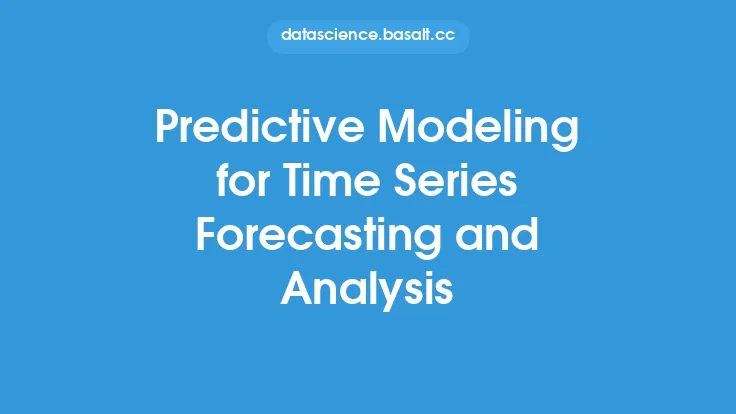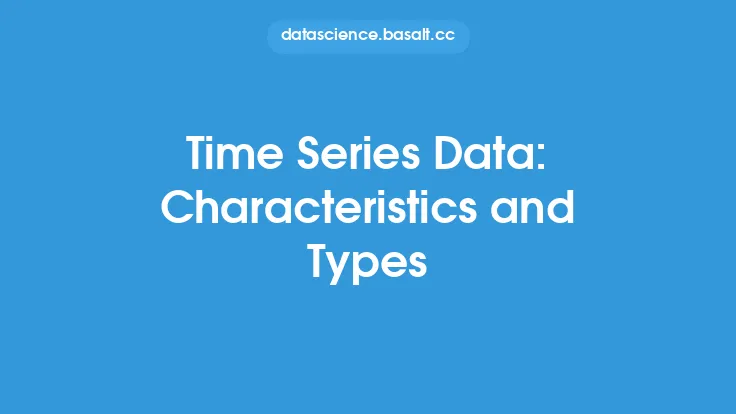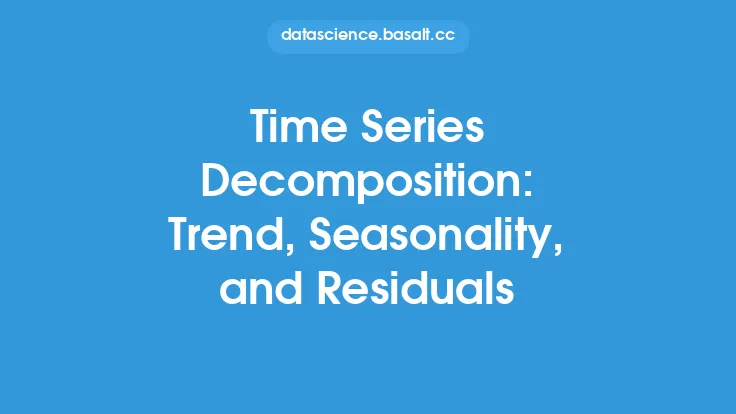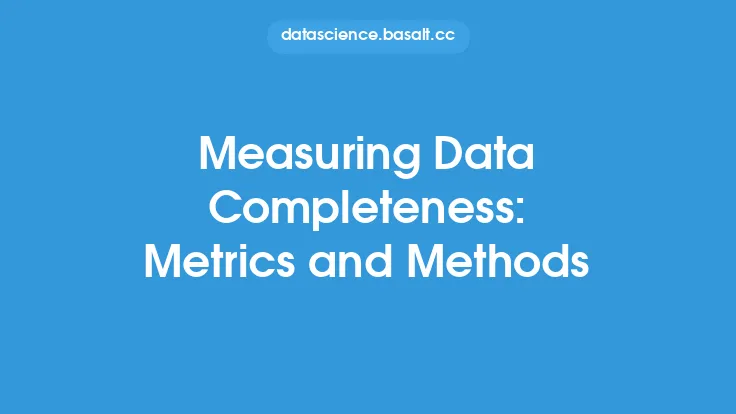Time series forecasting is a crucial aspect of time series analysis, as it enables organizations and individuals to make informed decisions about future outcomes based on historical data. The goal of time series forecasting is to predict future values in a time series, which can be achieved using various methods. In this article, we will delve into the different methods of time series forecasting and discuss the evaluation metrics used to assess the performance of these methods.
Introduction to Time Series Forecasting Methods
Time series forecasting methods can be broadly categorized into two main types: qualitative and quantitative methods. Qualitative methods rely on expert judgment and are often used when there is limited historical data available. Quantitative methods, on the other hand, use statistical models to forecast future values. Some common quantitative methods include:
- Autoregressive (AR) models, which use past values to forecast future values
- Moving Average (MA) models, which use the errors (residuals) from past forecasts to forecast future values
- Autoregressive Integrated Moving Average (ARIMA) models, which combine AR and MA models to forecast future values
- Exponential Smoothing (ES) models, which use a weighted average of past values to forecast future values
- Seasonal ARIMA (SARIMA) models, which extend ARIMA models to handle seasonal data
- Vector Autoregression (VAR) models, which use multiple time series to forecast future values
Machine Learning Methods for Time Series Forecasting
In recent years, machine learning methods have gained popularity in time series forecasting due to their ability to handle complex and non-linear relationships. Some common machine learning methods used for time series forecasting include:
- Recurrent Neural Networks (RNNs), which use feedback connections to capture temporal relationships
- Long Short-Term Memory (LSTM) networks, which are a type of RNN that can handle long-term dependencies
- Gradient Boosting Machines (GBMs), which use an ensemble of decision trees to forecast future values
- Support Vector Machines (SVMs), which use a kernel function to map the data into a higher-dimensional space
Evaluation Metrics for Time Series Forecasting
Evaluating the performance of time series forecasting methods is crucial to determine their accuracy and reliability. Some common evaluation metrics used for time series forecasting include:
- Mean Absolute Error (MAE), which measures the average difference between forecasted and actual values
- Mean Squared Error (MSE), which measures the average squared difference between forecasted and actual values
- Root Mean Squared Error (RMSE), which measures the square root of the average squared difference between forecasted and actual values
- Mean Absolute Percentage Error (MAPE), which measures the average absolute percentage difference between forecasted and actual values
- Coefficient of Determination (R-squared), which measures the proportion of variance in the actual values that is explained by the forecasted values
Model Selection and Hyperparameter Tuning
Model selection and hyperparameter tuning are critical steps in time series forecasting. The goal is to select the best model and hyperparameters that result in the most accurate forecasts. Some common techniques used for model selection and hyperparameter tuning include:
- Cross-validation, which involves splitting the data into training and testing sets to evaluate the model's performance
- Grid search, which involves searching for the optimal hyperparameters using a grid of possible values
- Random search, which involves searching for the optimal hyperparameters using random sampling
- Bayesian optimization, which involves using Bayesian methods to search for the optimal hyperparameters
Handling Non-Stationarity and Seasonality
Non-stationarity and seasonality are common challenges in time series forecasting. Non-stationarity occurs when the mean or variance of the time series changes over time, while seasonality occurs when there are regular fluctuations in the time series. Some common techniques used to handle non-stationarity and seasonality include:
- Differencing, which involves subtracting past values from the current value to make the time series stationary
- Normalization, which involves scaling the time series to have a constant mean and variance
- Seasonal decomposition, which involves separating the time series into trend, seasonal, and residual components
- Using seasonal models, such as SARIMA or seasonal ES, which can handle seasonal data
Real-World Applications of Time Series Forecasting
Time series forecasting has numerous real-world applications, including:
- Demand forecasting, which involves forecasting future demand for products or services
- Financial forecasting, which involves forecasting future stock prices or portfolio returns
- Weather forecasting, which involves forecasting future weather patterns
- Traffic forecasting, which involves forecasting future traffic patterns
- Energy forecasting, which involves forecasting future energy demand or supply
Conclusion
Time series forecasting is a complex and challenging task that requires careful consideration of the underlying data and the choice of forecasting method. By understanding the different methods of time series forecasting and the evaluation metrics used to assess their performance, organizations and individuals can make informed decisions about future outcomes. Additionally, by handling non-stationarity and seasonality, and using machine learning methods, time series forecasting can be improved, leading to better decision-making and more accurate predictions.





